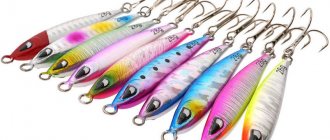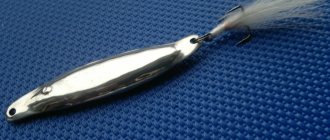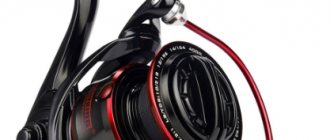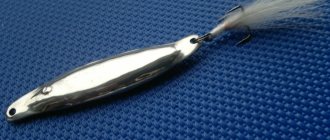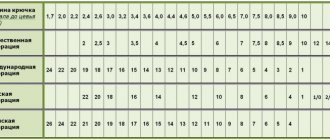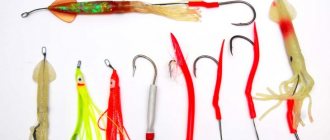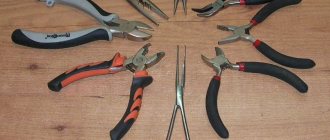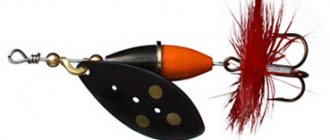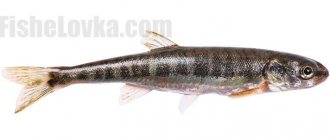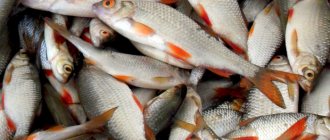Yuri 12/14/2020 175
I'm just a real fishing fan. Besides the fact that I really enjoy just going fishing and enjoying the process of catching fish, I am also a fan of the fact that I can regularly develop in this area. I constantly test new types of lures, baits, tackle and other modern products. And today I’ll tell you about jigs, which many even experienced fishermen have not yet heard of.
A jig spoon is one of the types of oscillating spoons, which is usually used for vertical fishing. In fact, this is the most effective product that opens up the opportunity for a fisherman to catch a fish under any conditions.
To be honest, I became acquainted with it relatively recently, however, I have already tested it more than once in freshwater bodies. Lightweight models for sea fishing have even moved into the spinning boxes of most fishermen. The jig bait for asp is especially popular. In general, this is a basic bait that is now used in reservoirs for hunting pike perch and asp. Therefore, I will share with you the features of jig fishing, and also tell you about my personal experience of using this bait for hunting freshwater representatives.
Features of hunting freshwater with a jig
Externally, the jig looks like a fairly heavy narrow spoon.
- Interesting! Many jig baits have a round or hexagonal body, and there are also rectangular and square models.
The weight of this bait is quite large, due to which it can be buried instantly. But at the same time, it becomes possible to keep the bait in the fishing zone, no matter how strong the current.
Sea jigs weigh even up to one kilogram. And small models perform well both in the seas and in rivers and lakes, helping to hunt perch, asp, catfish, and pike. For example, any jig designed for horse mackerel is suitable for use in closed reservoirs.
- Important! In the reservoirs of our country, it is best to use jigs weighing up to 40 grams, the length of which does not reach more than 8 cm.
The advantages of using a jig for pike perch and asp include the following:
- the ability to make the longest, deepest casts, which is especially important during fishing, when the prey is quite distant from the spinner;
- Various fishing and playing techniques are acceptable;
- The bait is suitable for any species of fish that are present in our reservoirs.
But keep in mind that this bait is best suited for fishing in clean waters.
Classification of baits
Sea and freshwater jigs can be divided into several groups. One classification is based on the manufacturing method. However, in this division there is no relationship with the game of the bait. In this regard, it is better to adhere to the following gradation, which takes into account the shape of the body.
- The most popular among anglers today are jigs with a narrow molded body shape. They have a characteristic bend located in the tail area. Thanks to this geometry, the jig has an attractive action for predators.
- In some modifications the upper part of the bait is heavier. This jig is good because it works equally effectively both when fishing vertically and when fishing with a classic step. Thanks to the heavy head, the spinner has a vertical component of the game.
- Vertical spoons, converted into jigs by cutting the head and tail parts, are also in demand among fans of spinning rods. It is important that the head of the bait remains heavier than the tail.
- For vertical spinning or jigging, anglers often use elaborately shaped jigs with a large number of edges. Such a bait in the water forms an alternating play of light that attracts the attention of a predator.
Many spinners appeared as a result of the creative approach of amateur fishermen and athletes. Therefore, more and more new products will be added to the jig category over time.
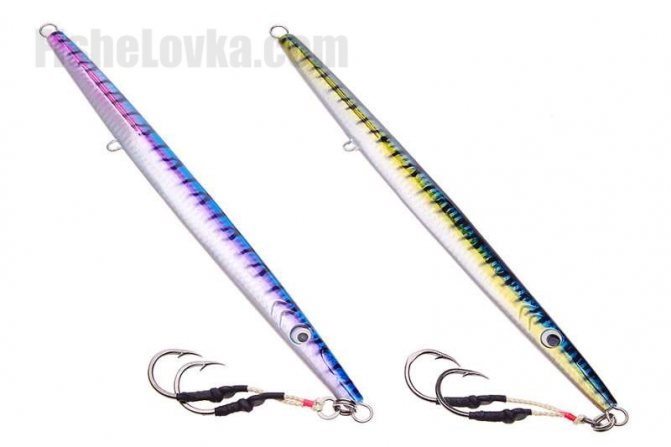
Photo 2. Narrow-bodied jigs.
How should you fish with a jig?
Many fishermen ask the question: “How to catch asp and pike perch with jigs?” In reality, everything is quite simple. In this case, there is no kind of game between the fish and the spinner. Due to this, the bait can be used even in a variety of situations, regardless of the fishing horizon, the strength of the current and other nuances that can generally affect the work of the spinner.
These types of “oscillators” are universal and absolutely any type of wiring can be used.
Depending on the type of predator, season, and behavior of the fish, a person must choose the optimal fishing technique to attract the attention of the fish and force it to attack. I basically like this bait. But at first it was quite difficult for me, as I had to get used to it and learn how to use it. I often went to Sazanya Bay and tested the bait.
I myself recently learned from more experienced, one might even say avid fishermen, that asp fishing with a jig is possible throughout the entire open water season. The asp actively reacts to bait, which in external characteristics is similar to a chub or bleak.
Perch also loves this bait, but for hunting it it is better to choose a jig weighing no more than 10 grams. Under no circumstances will pike miss this bait. I sometimes use jig fishing techniques with this bait, and catfish actively attack it. But in this case, it is better to use large, heavy bait in order to seduce the weighty, mustachioed inhabitant of the reservoir.
The jig is an excellent bait that simply must be present in the arsenal of every modern spinning angler. It is all-season and easy to use. This category of spinners is a real find for both beginners and more experienced fisherman.
TAGS:
Fishing rod equipment
Fishing with a jig has its own characteristics, which also affect the equipment of the fishing rod. For sea fishing you will need several reliable fishing elements.
- The rod should be chosen as a jig class with a test range from 100 to 200 g. The length should be 2.7-3.0 m. At the same time, the “stick” should not be too hard. It is preferable to use a spinning rod with a parabolic action, which will work along the entire length when landing fish. Some anglers fish quite successfully with carp rods.
- When choosing a reel, you should focus on personal preferences. Some spinners feel confident only with “meat grinders”. Therefore, it is useless for them to list the advantages of multiplier models. Those fishermen who have mastered new reels can safely install “multiples” on their rods. They are more powerful, lighter, safer and more comfortable compared to inertia-free models.
It is important! When purchasing, you should ask the seller what material is used to make the spool. Models with magnesium alloy must immediately be moved to the side. For them, salt water will be a quick death.
- Marine spinning rods should be equipped exclusively with braided cord. The breaking load should be in the range of 15-20 kg, which corresponds to a thickness of 0.25-0.30 mm.
- It is best to use a carabiner to connect the main line to the bait. It makes no sense to use thin leashes, because saltwater fish are not as careful as freshwater fish.
As for the additional installation of diverter leashes with silicone fish on the fishing line, such a scheme worsens not only the flight properties of the equipment, but also the performance of the jig itself.
Tags
Carp Buffalo Spring Vobla Asp Winter Crucian Rudd Summer Fishing baits Lower Volga Perch Autumn Fisherman's reminder Lures Bite forecast Fishing in Astrakhan Fishing baits Fishing tackle Fishing secrets Catfish Fishing methods Pike perch Catch Pike
Perch
Perch is one of the most common species of fish living in the reservoirs of our country. There is probably not a fisherman who has never caught this striped predator and could not recognize it. Indeed, the appearance of the perch is quite characteristic - the back is dark green, the sides are green-yellow, with 5-10 vertical dark green stripes. The eyes are yellow-orange, the ventral, anal and caudal fins are red. Large old individuals have a humpbacked back. The only thing worth remembering is that the color of the perch may vary slightly depending on its habitat. In quarries you can sometimes find sand-colored perches with dark brown stripes. There are also completely black perches - usually very old individuals.
This fish can reach a length of 60 cm and a weight of 2.5 k. But larger specimens have also been caught. For example, in 1996, a perch weighing 5 kg 965 g, that is, almost six kilograms, was caught on Lake Tishkin Sor in the Uvat district of the Tyumen region! Of course, there are few such “humpback whales” left, but fish weighing 0.8-1.5 kg are caught quite often.
Before you start catching large perch, you need to make sure that there is one in the given reservoir. To do this, you need to either ask local fishermen or find out yourself. The second method is often more accurate than the first. Its essence is this: first, you engage in regular fishing for medium-sized perch, and then, after catching a dozen or one and a half fish, correlate the weight of each individual with its age. As a rule, a three-year-old perch will weigh 50-60 g, a four-year-old – 100-120 g, and a five-year-old – 160-200. If the catch is dominated by five-year-old perches, then there is every reason to expect to encounter a perch with a high weight index. However, you should not forget that often due to a lack of food, slow-growing forms appear in the reservoir, and also that, perhaps, today the weather was simply not conducive to biting large perch.
One of the main conditions for successful catching of large perch is good knowledge of the reservoir. Typically, perches stand and feed in places with an uneven bottom, where there are stones, snags and other shelters. The fry also stay in these strong places, and where the fry is, there is the perch.
Having chosen a place for fishing, they clear the ice of snow and drill several holes. As a rule, they are drilled from the shallows to a depth, that is, from one and a half meters to five or six, and maybe more. The holes should be at a distance of 5-10 m from one another. The more holes are drilled, the more accurately you can study the bottom topography and, therefore, find the “humpback whale” faster.
TACKLE. The rod used is quite strong with a whip made of frost-resistant plastic. A reel is required. The nod is made from various materials, but most often it is made of plastic. The fishing line must withstand a breaking load of up to 2.5 kg, the usual diameter is 0.15-0.18 mm.
As a rule, truly trophy perches bite on spoons. The body length of such spinners is about 4-5 cm. The color of the bait, for the most part, depends on the fishing conditions: in clear, sunny weather in relatively shallow areas of the reservoir (with a depth of up to 2 m), a discreet color is required (dark green, brown, black ). And in cloudy weather, bright and shiny colors are good in deep places.
All spoons used for fishing can be divided into three groups: vertical, gliding and balancers.
VERTICAL SPINNERS. These lures differ in that in free fall they give a slight deflection. Vertical spoons are usually used in late winter and early spring, when the perch is quite active. The frequency of play of such a spinner should be high (up to 4 vibrations per second), and it gives the best results when fishing at a depth of up to 5 meters. I put a perch eye on the hook. When fishing with vertical spoons, it should be taken into account that pike perch and pike readily take such bait. Therefore, in order not to lose the spinner, you need to use a fishing line with a larger diameter. but, unfortunately, it happens that this does not help.
PLANNING SPOONS. Unlike a vertical spinner, a gliding spinner has an even greater deflection when playing. It seems to dive and, crashing into the bottom, raises a cloud of turbidity, which attracts fish even more. As a rule, when catching large perch, such a bait is used at depths of more than 5 m. Its weight should be 9-12. Hooking is either not needed at all, or it should be the smallest so as not to distort the play of the spinner.
BALANCERS. A characteristic difference between balancers is the presence of two hooks - front and back, and quite often a tee on the belly. In the water, this spoon takes a horizontal position, and when swung with a fishing rod, it rises up and deviates slightly to the side. Approaching the vertical, the bait makes damped oscillations. In fact, the bait seems to describe a figure eight in the horizontal plane with vertical deviations at the ends of the trajectory. When fishing with balance beams, bait is not used, as it significantly worsens the performance of the bait. It should be taken into account that balancers having different weights and different cross-sections also play differently. Using this, you can, through experimentation, find the most catchy model for the body of water where you fish.
There are two ways to tie a fishing line to a spinner: tightly - in the case when you have already chosen a catchy bait and are not going to change it, and with a loop - in the case of frequent changes of spinners (for example, during experimentation or testing).
The technique for trolling a perch in winter is simple: a sharp wave of the hand, an instant lowering of the fishing rod to its original place, a pause, and another wave of the hand, after which everything is repeated according to the same pattern. The amplitude of the stroke can be different, depending on the fish’s bite. If the perch takes the bait sluggishly, then the oscillation frequency should be less, and if the bite is sharp and confident, then you need to play the lure more intensely.
However, it happens that a perch only knocks on a seemingly catchy spoon, touching it, but does not want to take the bait. In such cases, you need to switch to jig fishing. But not with any or any attachment. Large perch are more willing to bite on a jig with maggot or burdock than with bloodworms. A perch eye can also be used as a bait. Therefore, when going trophy fishing for perch, in addition to spinners, do not forget to take with you jigs and at least two attachments - burdock and maggot.
Igor KUCHAVO, Stavropol
